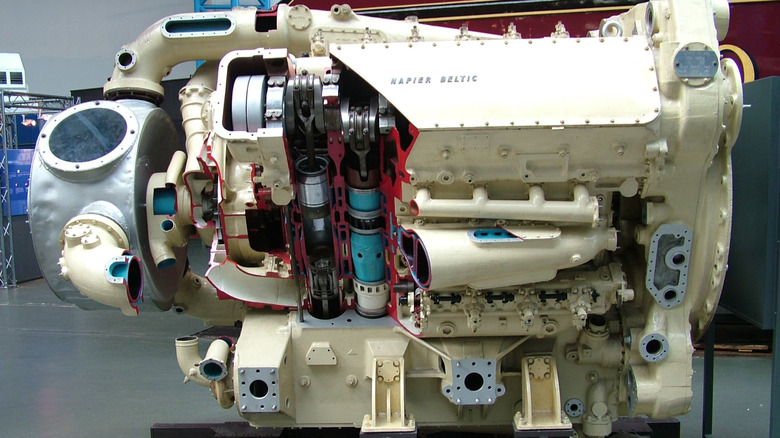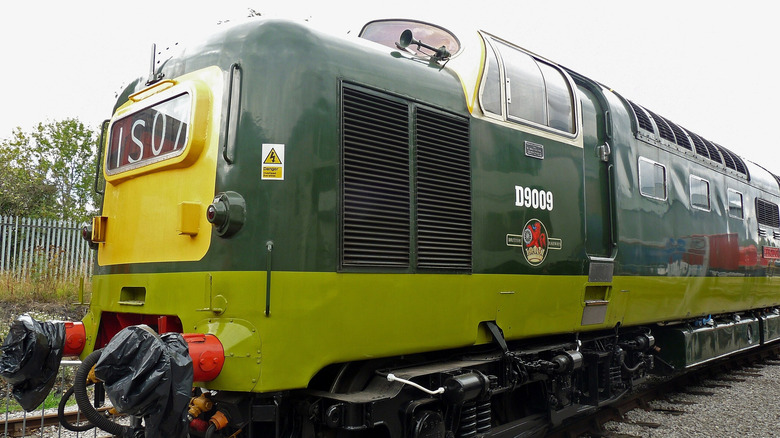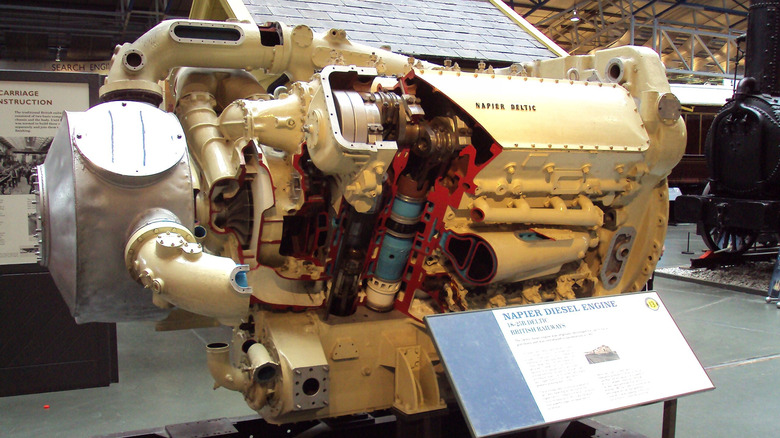What Happened To The Weird 18-Cylinder 2-Stroke Triangle Engine That Delivered 2,000 HP?
Years after World War II came to an end, Great Britain realized that it needed engines that had incredible power, but didn't take up too much space. Napier answered the call with the Deltic, as the company was already known for its bold approach to making aircraft and marine boat engines. Around 1947, the prototypes were running, with full production following in 1950. However, instead of creating the usual straight or V-shaped design, the Deltic used three banks of cylinders arranged in a triangle.
A crankshaft sat at each corner, and was linked all together in a complex gearing system that fit 18 cylinders and 36 pistons into just over 10 feet. Each pair of pistons worked against each other in a two-stroke cycle to move air and exhaust without needing valves or heads. The Deltic could sustain nearly 1,900 horsepower and briefly surge to 2,500 –thanks to its 88.3 liters and a dry weight of under 9,000 pounds. Despite being a compact yet powerful design, the triangle layout was so complex that it eventually proved too difficult to keep in mainstream service.
Powering locomotives, ships, and more
The unusual Deltic engine was too impressive and powerful to remain just an experiment; it had to be put to work, which it found very quickly, showing what it could do in real machines. The Royal Navy used it for its fast patrol boats and minesweepers, where compact size and high horsepower were a major benefit. On land, the engine powered British Rail's Class 55 'Deltic' locomotives, and were introduced in 1961 as the most powerful diesels of their time, capable of 100 mph, ultimately transforming express passenger services on the East Coast Main Line. These old locomotives of the past became postwar icons of railway engineering, with the triangle engine proving it could outperform many larger, heavier alternatives.
Beyond transport, some stationary and marine generators also relied on the Deltic's unique blend of density and power. The need for dependable horsepower in limited space is what tied all of these applications together. For over 60 years, the Deltic made its presence felt in both sea and rail, creating a reputation for raw performance and gave the locomotives an unmistakable sound, a distinctive roar still celebrated by enthusiasts today.
What happened to the Napier Deltic?
Despite its success in operation, the Deltic's career slowly ended as uncomplicated, more efficient technology began to take over. The engine was very complex, having three crankshafts, elaborate gears, and special injector drives; it was simply too difficult to maintain and also demanded highly trained mechanics for maintenance and repairs. The engine also used too much fuel and created more pollution, while newer engines with turbochargers and computers could make the same power more effectively. In the early 1980s, British Rail retired its Deltic locomotives, and in 2012, the Royal Navy began replacing the Napier Deltic engines in Hunt-class mine countermeasures vessels with modern Caterpillar diesel engines.
But the design never completely disappeared. The locomotives that survived are preserved and run at special events, on display in museums, and engineers still study the opposed-piston layout for inspiration to keep technology moving forward. Modern research into advanced diesel engines often references lessons learned from the design. At the end of the day, the Napier Deltic engine was an ambitious experiment, but it had its success and still continues to influence how engineers think about packing maximum power into minimal space.


